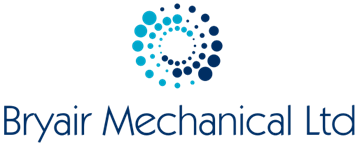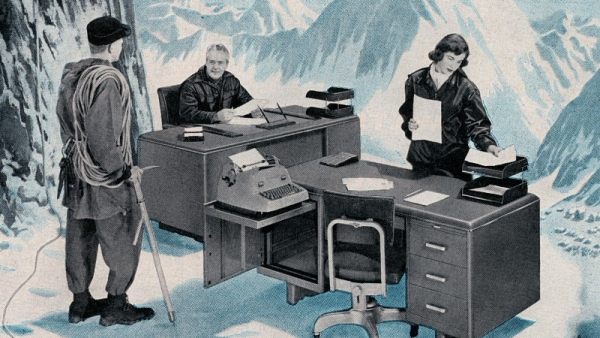Building Ventilation Blog
CIBSE COVID-19 Ventilation Guidance Version 4 23 October, 2020
What is the latest News?
With Lockdown 2.0 just about to come into effect, CIBSE just prior to the announcement released their latest standpoint on ventilation. I know the news about the Lockdown has not been greeted with any joy, but we are at that point where we all need to start taking responsibility. I feel a bit like a scratched record continuing to talk about the quality of our indoor air, but there is just not enough being done about it. The COVID-19 Virus (along with other Viruses) IS getting spread via aerosols, which gets picked up by the buildings HVAC system and gets passed to other people in the building that are not wearing a mask. No matter how much hand sanitiser you have used in the last 10 minutes! Yet we continue to follow the governments limited advice for stopping the spread. Hands, Face, Space. This is the same advice we were given back in February/March, and guess what we are back in another lockdown!!
The technology is around us to kill these Viruses and greatly improve the quality of air that is provided to us, which at the same time will improve our health and wellbeing.
In the latest CIBSE release on ventilation guidance there is a significant section on UV-C, news that I have been hoping was coming for several months. The latest guidance state “where natural ventilation is used, the dampers and/or windows should be opened, however being mindful of comfort factors”.
So, the questions are how many people are going to have office windows open on a freezing cold November morning? And how many people work in offices where the windows open? Do not get me wrong this message about ventilation is long overdue and very welcome!
The new guidance dedicates a full section to UV-C Disinfection. Section 6 of the guidance document goes on to explain what UltraViolet Germicidal Irradiation (UVGI) is, stating that UV-C operates in wavelengths of 254nm and has the ability to inactivate SARS-CoV2 and other pathogenic coronaviruses due to disrupting the nucleic acids which form the Virus genome. A lot of early studies have proven that UV-C easily deactivates SARS-CoV2 when aerosolised. The guidance document continues to explain the different ways that UV-C can be installed into buildings to help eradicate Viruses.
- Upper Room UltraViolet Germicidal Irradiation
- In-Duct UltraViolet Germicidal Irradiation
- UV-C Room Air Cleaners
Unique disinfection system that is 80% effective at reducing transmission.
Eliminate viruses and bacteria in the air we breathe with Upper Room ultraviolet disinfection fixtures.
This form of UV-C can achieve full indoor air disinfection while people are present, this is especially relevant in offices, schools, hotels, restaurants, shopping centres, as in any other indoor space where people gather.
In-Duct and HVAC UltraViolet Germicidal Irradiation
It is important to note how easily a virus spreads from person-to-person. Some viruses are highly contagious, while other viruses are less so. There is much more to learn about the transmissibility, severity, and other features associated with COVID–19 and investigations are ongoing. What is not in any dispute is the fact that with the correct level of UV-C exposure no virus is resistant to the killing effect of UV-C.
For the most effective microbial control, UVC germicidal Emitters are installed on the supply side of the HVAC system, downstream from the cooling coil and above the drain pan. This location provides more effective biofilm and microbial control than in-duct UVC installations while still providing the highest dosages of UVC to the airstream.
UV-C Room Air Cleaners/Purifiers
UV air purifiers are designed to use UV-C light to inactivate airborne pathogens and microorganisms like mould, bacteria and viruses. On the market, UV-C air purifiers are currently sold as stand-alone, freestanding devices or as systems installed into pre-existing residential or commercial HVAC units. As air is forced through the device, it passes UV lamps, which directly attempt to disinfect the air by means of germicidal irradiation.
History of UV-C in HVAC Systems
UV-C sounds like a fancy new technology that has been released just in time for this current pandemic. This, however, could not be further from the truth. UV-C was discovered by Arthur Downes and Thomas P. Blunt who published a paper describing the sterilisation of bacteria exposed to short wavelength light in 1878.
In 1910 UV light was used to disinfect drinking water in Marseille, France. The use of UV light for water treatment is now commonly used across Europe and North America, with over 6,000 UV water treatment plants operational in Europe alone. In the 1930s and 40s, an experiment in public schools in Philadelphia showed that upper-room ultraviolet fixtures could significantly reduce the transmission of measles among students.
Disinfection is a function of UV intensity and time. For this reason, it is in theory not as effective on moving air, or when the lamp is perpendicular to the flow, as exposure times are dramatically reduced. However, numerous professional and scientific publications have indicated that the overall effectiveness of UVGI increases when used in conjunction with fans and HVAC ventilation, which facilitate whole-room circulation that exposes more air to the UV source. However, a UV lamp placed at the coils and drain pans of cooling systems will keep microorganisms from forming in these naturally damp places and helps to keep the entire HVAC system clean and efficient.
Benefits of UV-C in HVAC Systems
As you can probably tell UV-C has been used within HVAC systems for a long time prior to COVID-19 being unleashed upon our shores. One of the main reasons for installing UV-C in HVAC systems Pre Covid (PC) was to keep the HVAC systems clean and as efficient as possible.
“Mechanical Efficiency is a dimensionless number that measures the effectiveness of a machine in transforming the power input to the device to power output”.
Energy & Maintenance Savings:
Decrease your operating costs by reducing HVAC energy consumption, maintenance, and water costs. Reduce your carbon footprint. Return on Investment is achieved through these savings from 12 – 24 months, meaning the cost to install UV-C in HVAC would have been paid for after a maximum period of 24 months.
Health and Well-Being:
Improve Indoor Air Quality (IAQ) by killing 99% of bacteria, viruses, and mould, resulting in better productivity and lower employee absenteeism.
Sustainability:
More efficient HVAC systems last longer, cutting unnecessary capital expenditures for replacement and keeping prematurely aged equipment out of landfills.
Many thanks to E-Co our technology partner.
Please contact Bryair Mechanical () for further information and see how we can help improve your IAQ.



